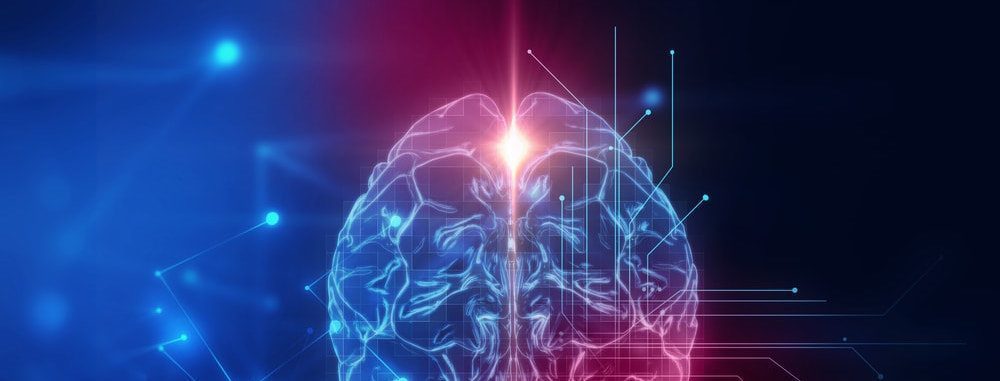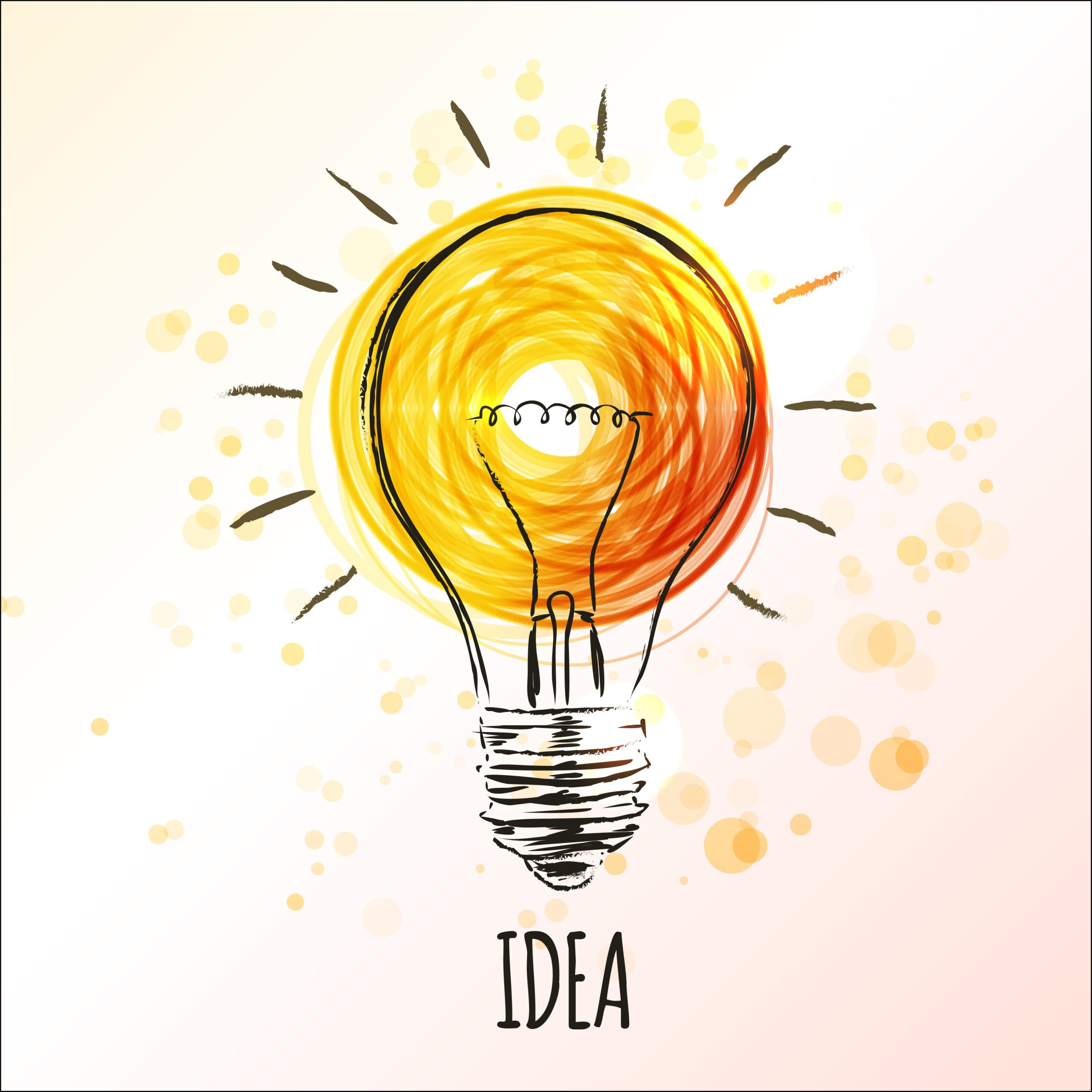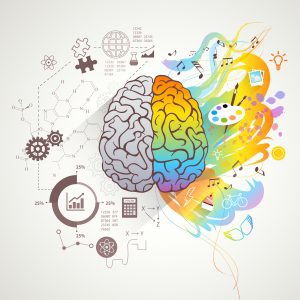0
You have 0 items in your cart

Brain plasticity is the extraordinary power that enables the brain to modify its makeup and operate based on the changes within the body or surrounding environment. The modifications happen through the cortex which is the outer layer of the brain. Brain plasticity affects the ability to learn and alter our behavior and more so during childhood. It gives us an idea why children learn fast and why what they learn remains a fundamental lifelong property of the brain.
 Human beings have a unique capability to learn new things and adjust to new environments. Nonetheless, certain challenges need to be overcome to design shifts that can improve the quality of life in a broader sense. One challenge to attaining this goal is that learning is quite particular, so we need to be aware of our own learning process in order not to limit the potential benefits of learning in our day-to-day life.
Human beings have a unique capability to learn new things and adjust to new environments. Nonetheless, certain challenges need to be overcome to design shifts that can improve the quality of life in a broader sense. One challenge to attaining this goal is that learning is quite particular, so we need to be aware of our own learning process in order not to limit the potential benefits of learning in our day-to-day life.
The ability to learn, acquire new skills, and change behavior as a result of experience is critical in ensuring human beings survival. Our ability to learn is one variable we can use to explain our success. Learning is broad and complex and varies from one individual to the other.
 Learners sometimes reach to a point where they feel education has become a challenge, and they can’t continue. The obstacles can be due to stress, depression, and are signs of a fixed mindset. What is important is to understand how we can always keep on challenging our current state of mind in order to be in a constant state of innovation, in which we are proactively aiming for tasks that stimulate us and promote growth. Keep in mind how learning changes the structure of the brain and appreciate that the implications are far-reaching.
Learners sometimes reach to a point where they feel education has become a challenge, and they can’t continue. The obstacles can be due to stress, depression, and are signs of a fixed mindset. What is important is to understand how we can always keep on challenging our current state of mind in order to be in a constant state of innovation, in which we are proactively aiming for tasks that stimulate us and promote growth. Keep in mind how learning changes the structure of the brain and appreciate that the implications are far-reaching.
An example is where learning can be modified to accommodate methods that are more productive towards changing the brain. Additionally, natural inclinations towards some learning techniques can be uncovered when you explore the brain structure. If learning changes the brain, then it is possible to induce the changes to make it more compliant with the changes.
 The ability of the brain to adapt (brain plasticity) occurs in two distinct ways. It could be through an increase in the number of synapses between neurons or through a shift in the internal structure of the neurons. Short-term memory can quickly change into long-term memory which is a measure of the plasticity of the brain. If the information survives then, it becomes more permanent, a phenomenon which is associated with biochemical and anatomical changes.
The ability of the brain to adapt (brain plasticity) occurs in two distinct ways. It could be through an increase in the number of synapses between neurons or through a shift in the internal structure of the neurons. Short-term memory can quickly change into long-term memory which is a measure of the plasticity of the brain. If the information survives then, it becomes more permanent, a phenomenon which is associated with biochemical and anatomical changes.
The human brain can reorganize itself by making new connections between the brain cells. Due to genetics, existing environment and personal actions play a crucial role in brain plasticity. Therefore, we must understand how neuroplasticity occurs in the brain to see how it affects our ability to learn.
Neuroplasticity occurs:
 Adjusting To New Learning after Injury
Adjusting To New Learning after InjuryThe brain function that is associated with a particular activity can shift from one location to the other due to brain damage, recovery, or normal life experiences. For instance, if you suffer a stroke and your hand gets paralyzed, adjusting to using the same hand becomes a challenge in the beginning. However, as you continue doing the activity, the hand begins to adjust slowly and starts to perform the activity again.
The brain this case helps in bringing about the slow changes as you adapt and learn new things. It makes up for the damage by restructuring and making new connections between intact neurons which must be stimulated through activity to reconnect again.
Any man could, if he were so inclined, be the sculptor of his own brain

Dr. Norman Doidge in his book “The Brain that Changes Itself” led to novel insights into the functions of the brain and the implications for learning, leading healthy lifestyles, and having a balanced life. Some people believe that the brain, its structure, and anything in it stagnates when we hit a certain age. When a child is born, they learn things like language, mobility, and abstract thinking; hence, in a similar case, the brain grows bigger until we reach a plateau.
Such a misconception is what Dodge and other renowned researchers like Michael Merzenich have tried to dispel. An investigation into patients with neurological problems puts emphasis on the concept of neuroplasticity. Our brain is a plastic organ which can change in an instant all through a human’s life based on existing conditions and what we choose to practice. In simple terms, we can change the physical structure of our brain.
 The truth is, learning keeps the brain in active mode. As a young person, changing your brain is a lot easier given that the brain adjusts to learning mode at all times as a survival skill. As we age, we can equate the learning with gaining more knowledge although it’s more of having a sustainable and intentional practice of new skills that change the map in our brain.
The truth is, learning keeps the brain in active mode. As a young person, changing your brain is a lot easier given that the brain adjusts to learning mode at all times as a survival skill. As we age, we can equate the learning with gaining more knowledge although it’s more of having a sustainable and intentional practice of new skills that change the map in our brain.
Multitasking is an enemy of learning as it introduces interference and noise and blocks neurons from creating strong connections in the brain.
 Learning to overcome a bad habit can be challenging because it means changing actively choosing to challenge yourself thus reshaping your brain. You achieve this through intense and focused practice on new skills to replace the strong connections in your brain. The old map of a brain has solid foundations that need some effort to remove and redevelop.
Learning to overcome a bad habit can be challenging because it means changing actively choosing to challenge yourself thus reshaping your brain. You achieve this through intense and focused practice on new skills to replace the strong connections in your brain. The old map of a brain has solid foundations that need some effort to remove and redevelop.
We associate our cognitive abilities through aging, but this doesn’t have to be the case. In fact, anything that happens in a young brain can happen in an older one but needs sustained, dedicated, and intentional learning of new skills. By so doing, you can delay the cognitive deadline.
Our brains renew themselves throughout life to an extent previously thought not possible
![]() Learning to overcome a bad habit can be challenging because it means changing actively choosing to challenge yourself thus reshaping your brain. You achieve this through intense and focused practice on new skills to replace the strong connections in your brain. The old map of a brain has solid foundations that need some effort to remove and redevelop.
Learning to overcome a bad habit can be challenging because it means changing actively choosing to challenge yourself thus reshaping your brain. You achieve this through intense and focused practice on new skills to replace the strong connections in your brain. The old map of a brain has solid foundations that need some effort to remove and redevelop.
Learning new things is a crucial ingredient of human existence because it carries a high survival rate. We must understand that if there is no need for spatial knowledge, then this area of the brain will remain underdeveloped. To learn this model, you require time, exposure, and interaction. You need time to restructure the brain, change physically, and also accept new information. Just imprinting knowledge alone is not enough to retain it; hence, you must develop the ability to adapt the brain to the new activity.
 Brain plasticity can also occur in musicians more compared to those who don’t sing. In their study, Gaser and Schlaug (2003) found that professional singers who practice for at least one hour every day have a much higher grey matter compared to non-singers. The changes occur in various brain areas involved in playing music.
Brain plasticity can also occur in musicians more compared to those who don’t sing. In their study, Gaser and Schlaug (2003) found that professional singers who practice for at least one hour every day have a much higher grey matter compared to non-singers. The changes occur in various brain areas involved in playing music.
In a recent study by Draganski and colleagues (2006), extensive learning of conceptual information can trigger plastic changes in the brain. The scholars imaged the brains of German medical students for three months just before they sat for their exams and after the exams. On comparing the brains with students that were not reading for their exams at the same time, they discovered that the brain of the medical students’ induced changes in parts of the parietal cortex and posterior hippocampus. The two parts of the brain are involved in learning and memory retrieval.
 If you are bilingual, it will alter the structure of your brain. Individuals with the ability to speak two different languages tend to have more gray matter in the dialect area. There is a connection between the age at which people become bilingual and the amount of gray matter. When you learn a new language later in life, it still affects the brain since it tends to increase the level of the gray matter it produces although not as much as when you are young. As people age, the capacity to alter the structure of the brain also decreases — that’s why you need to actively stimulate your learning process in adulthood to obtain that.
If you are bilingual, it will alter the structure of your brain. Individuals with the ability to speak two different languages tend to have more gray matter in the dialect area. There is a connection between the age at which people become bilingual and the amount of gray matter. When you learn a new language later in life, it still affects the brain since it tends to increase the level of the gray matter it produces although not as much as when you are young. As people age, the capacity to alter the structure of the brain also decreases — that’s why you need to actively stimulate your learning process in adulthood to obtain that.
When you are a child, your ability to learn and capture things is higher and more so if it’s a new language. Languages portray the available dynamics in acquiring a new language and how the brain adapts to the changes. Many theories claim that humans can distinguish between syllables; however, infants have an innate knowledge of the basic structural foundation of language.
 In actual sense, the knowledge of universal grammar tends to disappear immediately after childhood. A mature adult cannot maintain the same fluency in any new language and yet grown-ups are more adept at using a conscious study of another language in a classroom setting than kids. Adults have many shortcuts to use in catching a new language compared to children whose brain still is developing.
In actual sense, the knowledge of universal grammar tends to disappear immediately after childhood. A mature adult cannot maintain the same fluency in any new language and yet grown-ups are more adept at using a conscious study of another language in a classroom setting than kids. Adults have many shortcuts to use in catching a new language compared to children whose brain still is developing.

Learning means gaining new knowledge, skill, comprehension, or information. It is a lifelong process where individuals keep their mind and body engaged at every stage in pursuit of knowledge. An expert in the area of neuroplasticity, Dr. Michael Merzenich says that human beings can change the structure of their brain and increase its ability to learn. In his research, if you don’t challenge the brain with new things every day, its functionality will begin to wear off leading to reduced memory and cognitive functions. In a collaborative experiment with his colleague William Jenkins, Ph.D. the adult brain demonstrates a higher chance of adaptability in response to stimuli.
Lifelong learning is not a preserve of kids alone; it extends beyond the conventional classroom setting. Nowadays, most communities and schools are coming up with targeted education programs that include topics on different areas. They incorporate naturopathic medicine and photography. The activities present fresh opportunities for learners to see and learn new things, grab new concepts, and stimulate the brain in different ways to promote its growth.
 Teachers are discovering that brain fitness for kids is just as important as their physical fitness. Adults too are now embracing continuous learning to keep their minds and body busy and healthy. Some even take up volunteer roles or educational tours to pursue learning and keep the brain occupied. By trying to learn a new thing, language, music, technique, or game you’ll stimulate the brain to stay active and freshen up your memory.
Teachers are discovering that brain fitness for kids is just as important as their physical fitness. Adults too are now embracing continuous learning to keep their minds and body busy and healthy. Some even take up volunteer roles or educational tours to pursue learning and keep the brain occupied. By trying to learn a new thing, language, music, technique, or game you’ll stimulate the brain to stay active and freshen up your memory.
From this discussion, we can conclude that learning can change how the brain functions. Regardless of whether it is through language or spatial knowledge, your brain has a higher degree of flexibility all through an individual’s life. It has an effect on your learning and adaptability abilities to new things, situations, and activities.
 The brain is always learning and adjusting to new things every day; it is a continuous process. It may be difficult to be fully proficient in some things, but the brain still retains its ability to adapt to new situations. For instance, catching a new native language is challenging, but should one go blind; they’ll soon adjust to using brain or sign language in the case of loss of hearing.
The brain is always learning and adjusting to new things every day; it is a continuous process. It may be difficult to be fully proficient in some things, but the brain still retains its ability to adapt to new situations. For instance, catching a new native language is challenging, but should one go blind; they’ll soon adjust to using brain or sign language in the case of loss of hearing.
The human brain can adapt its language circuitry at any stage in life meaning the use of a particular brain activity can expedite the adaptation process. What this means is that as much as learning a new language is possible, but you must redirect the change to use the correct aspect of brain plasticity to see a difference in your learning.
Restructuring this is important for how we understand people, information, and opinion. Some people do value familiarity from a psychological point of view and enjoy the safety that comes with the same. However, they are not cemented through this process forever; if the brain can change, then we must handle issues with a cognitive level. We must remember that learning and memorizing things is possible and can be an exciting new process that happens through the consistency of practicing new skills throughout life.
You fill a bucket drop by drop. You clear your mind thought by thought. You heal yourself moment by moment. Today I make one drop, clear one thought, and get present to one moment. And then I do it again.
This Privacy Policy describes how SmartMinds Enterprise OÜ (“SmartMinds”, “we”, “us” or “our”) handles information about yourself that you may provide us with through your use of the Site or Service (“Personal Information”) and should be read along with our Terms of Use posted here, and all other operating rules and additional terms and conditions published on our Site.
SmartMinds is committed to keeping your information secure and managing it in accordance with our legal responsibilities under privacy and data protection laws where we operate. SmartMinds uses your Personal Information only in accordance with this Privacy Policy and Applicable Law. SmartMinds does not sell your Personal Information to third parties. Any capitalized terms not defined in this Privacy Policy are defined in the Terms of Use.
We employ the use of cookies. By using SmartMinds‘s website you consent to the use of cookies in accordance with SmartMinds’s privacy policy.
Most of the modern day interactive web sites use cookies to enable us to retrieve user details for each visit. Cookies are used in some areas of our site to enable the functionality of this area and ease of use for those people visiting. Some of our affiliate / advertising partners may also use cookies.
Unless otherwise stated, SmartMinds and/or it’s licensors own the intellectual property rights for all material on SmartMinds All intellectual property rights are reserved. You may view and/or print pages from https://smartminds.one for your own personal use subject to restrictions set in these terms and conditions.
You must not:
We will approve link requests from these organisations if we determine that: (a) the link would not reflect unfavourably on us or our accredited businesses (for example, trade associations or other organisations representing inherently suspect types of business, such as work-at-home opportunities, shall not be allowed to link); (b)the organisation does not have an unsatisfactory record with us; (c) the benefit to us from the visibility associated with the hyperlink outweighs the absence of SmartMinds; and (d) where the link is in the context of general resource information or is otherwise consistent with editorial content in a newsletter or similar product furthering the mission of the organisation.
These organisations may link to our home page, to publications or to other Web site information so long as the link: (a) is not in any way misleading; (b) does not falsely imply sponsorship, endorsement or approval of the linking party and its products or services; and (c) fits within the context of the linking party’s site.
If you are among the organizations listed in paragraph 2 above and are interested in linking to our website, you must notify us by sending an e-mail to Please include your name, your organisation name, contact information (such as a phone number and/or e-mail address) as well as the URL of your site, a list of any URLs from which you intend to link to our Web site, and a list of the URL(s) on our site to which you would like to link. Allow 2-3 weeks for a response.
Approved organizations may hyperlink to our Web site as follows:
No use of (name)’s logo or other artwork will be allowed for linking absent a trademark license agreement.
Without prior approval and express written permission, you may not create frames around our Web pages or use other techniques that alter in any way the visual presentation or appearance of our Web site.
We shall have no responsibility or liability for any content appearing on your Web site. You agree to indemnify and defend us against all claims arising out of or based upon your Website. No link(s) may appear on any page on your Web site or within any context containing content or materials that may be interpreted as libelous, obscene or criminal, or which infringes, otherwise violates, or advocates the infringement or other violation of, any third party rights.
We reserve the right at any time and in its sole discretion to request that you remove all links or any particular link to our Web site. You agree to immediately remove all links to our Web site upon such request. We also reserve the right to amend these terms and conditions and its linking policy at any time. By continuing to link to our Web site, you agree to be bound to and abide by these linking terms and conditions.
If you find any link on our Web site or any linked web site objectionable for any reason, you may contact us about this. We will consider requests to remove links but will have no obligation to do so or to respond directly to you.
Whilst we endeavour to ensure that the information on this website is correct, we do not warrant its completeness or accuracy; nor do we commit to ensuring that the website remains available or that the material on the website is kept up to date.
We have a 30-day Money Back Guarantee when purchasing Realized Mind, all we ask if that within the 30 days to complete the learning experience and if you truly feel you did not receive any value from the experience we are happy to refund your payment and close your account.
To the maximum extent permitted by applicable law, we exclude all representations, warranties and conditions relating to our website and the use of this website (including, without limitation, any warranties implied by law in respect of satisfactory quality, fitness for purpose and/or the use of reasonable care and skill). Nothing in this disclaimer will:
The limitations and exclusions of liability set out in this Section and elsewhere in this disclaimer: (a) are subject to the preceding paragraph; and (b) govern all liabilities arising under the disclaimer or in relation to the subject matter of this disclaimer, including liabilities arising in contract, in tort (including negligence) and for breach of statutory duty.
To the extent that the website and the information and services on the website are provided free of charge, we will not be liable for any loss or damage of any nature.
